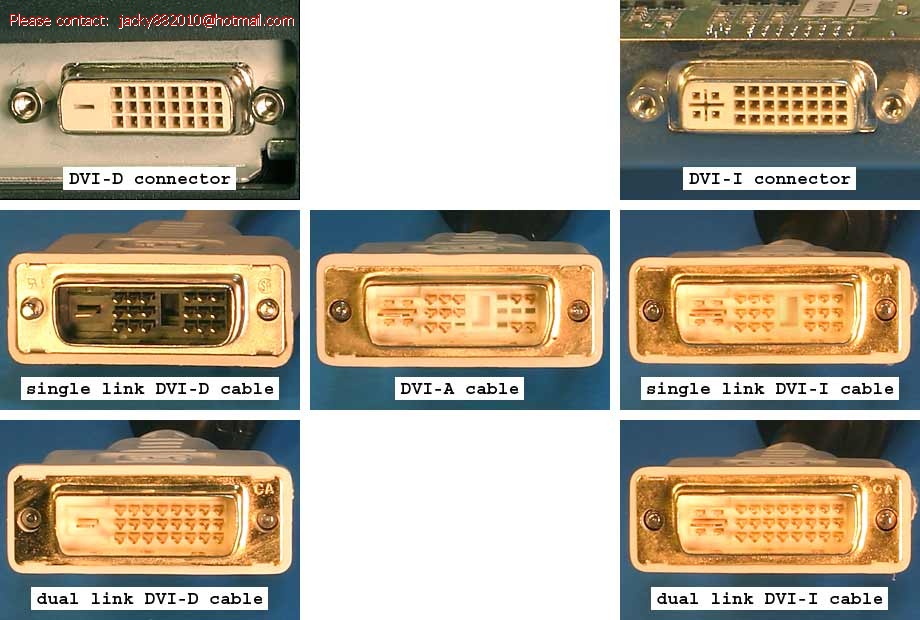DVI was created to provide a high-speed digital interface for video signals. But the creators also wanted a flexible standard so DVI included support for an analog interface. The analog part of DVI is compatible with standard VGA monitors. There's actually three kinds of DVI: DVI-D which is digital only, DVI-A which is analog only, and DVI-I which includes both analog and digital (the "I" is for integrated analog and digital). The top row of the image below shows the kinds of DVI connectors which can be found on video cards and monitors. The bottom two rows show the matching cables.

The two kinds of connectors are DVI-D and DVI-I. It's easy to tell them apart. DVI-I has a pair of slots which look like a plus sign with four sockets around it. DVI-D has a single slot which looks like a minus sign. Because of that physical difference, you can plug a DVI-D cable into a DVI-I connector but you can't plug a DVI-I cable into a DVI-D connector. A DVI-D cable is wired only for the digital video signal. DVI-D cables can't carry analog signals. A DVI-I cable is wired for both analog and digital video and can work in either mode. There are two different kinds of DVI-D and DVI-I cables: single link and dual link. The difference between them will be described later. DVI-A is very rarely used. A DVI-A cable is wired only for an analog video signal and can't carry digital signals. You'll note that there is no DVI-A connector shown in the image above. In the unlikely event that you come across a video card with a DVI-A output or a monitor with a DVI-A input, they'll use a DVI-I connector. A DVI-A cable fits into a DVI-I connector but won't fit into a DVI-D connector. The vast majority of analog monitors use VGA cables so DVI-A is very rarely used.
| DVI connector and cable compatibility |
| |
DVI-D cable |
DVI-I cable |
DVI-A cable |
| DVI-D connector |
Works in digital mode |
Cable won't fit in connector |
Cable won't fit in connector |
| DVI-I connector |
Works in digital mode |
Works in digital or analog mode |
Works in analog mode |
| DVI-A connector (really a DVI-I connector but wired only for analog) |
Fits in connector but doesn't work |
Works in analog mode |
Works in analog mode |
Most video cards use DVI-I connectors so they can support both analog and digital monitors using a single connector. Those video cards have separate circuitry to provide both analog and digital signals for the same video card output. There's usually limited space for video card output connectors so they need to fit both kinds of signals into the same connector. As of 2006, DVI-D video card connectors are far less common than DVI-I because they don't allow people to connect the still common analog VGA monitors.
DVI monitors which support only digital signals have a DVI-D connector. Virtually all monitors which support only analog signals have a VGA connector instead of DVI-A. And most monitors which support both digital and analog have both a DVI-D and a VGA connector. There are monitors which have DVI-I connectors to support both analog and digital, but as of 2006, they aren't common. When you're using a DVI-I monitor with a DVI-I video card then you can run in digital mode when using a DVI-D cable or you can run in analog mode when using a DVI-A cable (if you can find one). But if your video card, cable, and monitor are all DVI-I then they can use either analog or digital. You generally control whether to use analog or digital by using the monitor's on-screen display to select the appropriate input.





